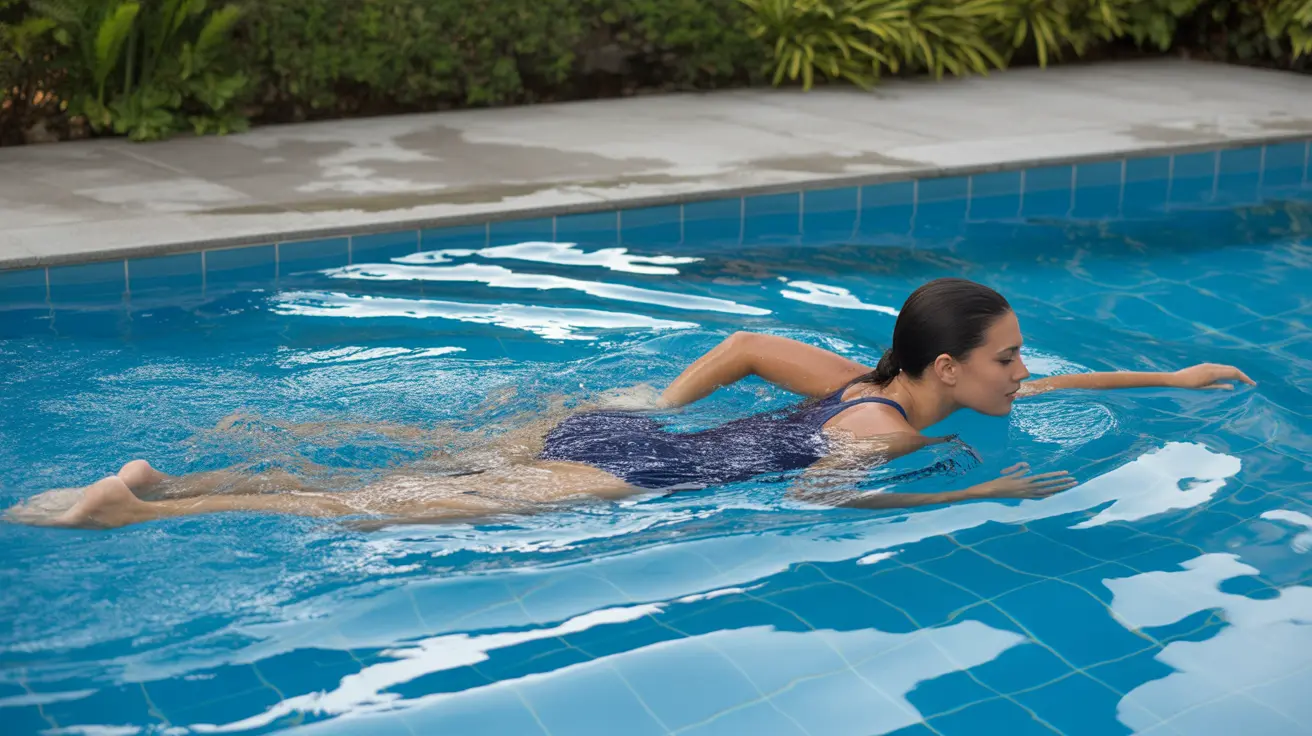Living with a colostomy bag doesn't mean you have to give up swimming or enjoying water activities. Many people wonder if they can you swim with a colostomy bag safely, and the answer is a resounding yes. With proper preparation, the right equipment, and knowledge of best practices, swimming can remain an enjoyable and beneficial part of your lifestyle.
Understanding how to prepare your ostomy system for aquatic activities is crucial for both safety and confidence. Whether you're planning to swim in a chlorinated pool, natural lake, or ocean waters, taking the right precautions will help ensure a worry-free experience while maintaining the integrity of your colostomy system.
Understanding Colostomy Bag Water Safety
Colostomy bags are designed to be water-resistant, making swimming entirely possible for most ostomates. The adhesive barrier that secures your pouch to your skin creates a watertight seal that can withstand exposure to water for reasonable periods. However, prolonged submersion may affect the adhesive's effectiveness, so understanding your system's limitations is important.
Modern ostomy products have significantly improved in terms of water resistance. Many manufacturers specifically test their products for water activities, ensuring that the materials and adhesives can handle exposure to chlorinated pool water, saltwater, and fresh water environments.
The key to successful swimming lies in proper preparation and selecting appropriate ostomy supplies designed for active lifestyles. Temperature changes, water pressure, and chemical exposure can all impact your equipment, so choosing high-quality, water-resistant products is essential.
Pre-Swimming Preparation Steps
Proper preparation before entering the water is crucial for preventing complications. Start by ensuring your colostomy bag is securely attached and that the adhesive barrier is in good condition. If your current appliance has been in place for several days, consider changing to a fresh system before swimming.
Empty your pouch completely before swimming to reduce weight and minimize the risk of the bag pulling away from your skin. A lighter bag creates less drag in the water and reduces stress on the adhesive seal. Check all edges of your barrier to ensure they're firmly adhered to your skin.
Consider applying additional securing products such as ostomy belt, adhesive strips, or waterproof tape around the edges of your barrier. These extra measures provide additional security and peace of mind while in the water.
Leak Prevention Strategies
Preventing leaks while swimming requires a multi-layered approach to security. Start with a high-quality, water-resistant ostomy system that's appropriate for your activity level. Two-piece systems often provide more flexibility for swimming, as you can secure the bag more effectively to the barrier.
Waterproof tape applied around the entire perimeter of your barrier creates an additional seal against water infiltration. Medical-grade waterproof tapes are specifically designed for ostomy use and won't damage your skin when removed properly.
Some ostomates prefer using smaller pouches while swimming, as they're less likely to catch on pool edges or create drag in the water. Mini-caps or smaller bags can be excellent options for shorter swimming sessions, provided you empty your regular pouch beforehand.
Temperature considerations are also important for leak prevention. Cold water can cause the adhesive to become less flexible, while very warm water might make it overly pliable. Understanding how your specific products react to different temperatures helps you make informed decisions about swimming conditions.
Specialized Swimwear and Protective Covers
While special swimwear isn't absolutely necessary, it can significantly boost your confidence and comfort while swimming. Ostomy-specific swimwear is designed with built-in pockets or panels that discreetly hold and protect your colostomy bag while providing stylish coverage.
High-waisted swimsuit bottoms, swim shorts with longer inseams, or one-piece suits with strategic design elements can effectively conceal your ostomy appliance. Many mainstream swimwear brands now offer options that work well for ostomates without being specifically labeled as medical swimwear.
Waterproof ostomy covers provide an extra layer of protection against water infiltration and can help prevent the bag from floating or moving excessively in the water. These covers are typically made from thin, flexible waterproof materials that don't interfere with swimming movements.
Some swimmers prefer using ostomy wraps or bands that provide compression and support while keeping the bag close to the body. These accessories can be particularly helpful during more vigorous swimming activities or water sports.
Pool vs. Ocean Swimming Considerations
Different water environments present unique challenges and considerations for colostomy bag users. Chlorinated pools are generally the easiest environment for ostomy swimming, as the controlled chemical balance is less likely to cause skin irritation or equipment problems.
Ocean swimming requires additional precautions due to saltwater's potential effects on skin and adhesives. Salt can be drying and may affect the longevity of your ostomy system. Waves and currents also create more physical stress on your equipment, so extra securing measures are particularly important in ocean environments.
Freshwater swimming in lakes or rivers presents its own considerations, including potential exposure to bacteria or other microorganisms. While your closed ostomy system provides protection, it's important to ensure your barrier seal remains intact to prevent any water infiltration.
Regardless of the water type, always shower with fresh water after swimming to remove chlorine, salt, or other contaminants that might affect your skin or ostomy supplies. This post-swim routine helps maintain skin health and prolongs the life of your ostomy system.
Post-Swimming Care and Maintenance
Proper care after swimming is just as important as pre-swim preparation. Immediately after leaving the water, gently pat your ostomy area dry with a clean towel, being careful not to disturb the adhesive edges. Allow the area to air dry completely if possible before covering with clothing.
Inspect your ostomy system for any signs of water infiltration, loose edges, or other issues. If you notice any problems, address them promptly to prevent more serious complications. Having backup supplies readily available is always a good practice for any ostomate.
Remove any additional securing tapes or waterproof barriers carefully to avoid skin irritation. Use appropriate adhesive removers if necessary, and clean the surrounding skin gently with mild, pH-balanced cleansers designed for sensitive ostomy skin.
Frequently Asked Questions
Can you swim with a colostomy bag safely?
Yes, you can swim safely with a colostomy bag. Modern ostomy systems are designed to be water-resistant and can handle exposure to pool water, ocean water, and fresh water. With proper preparation and high-quality supplies, swimming poses no significant risks to your health or ostomy system.
How do you prepare a colostomy bag for swimming?
Prepare by ensuring your bag is securely attached with a fresh, properly adhered barrier. Empty the pouch completely before swimming, check all adhesive edges, and consider applying waterproof tape around the barrier perimeter. Use additional securing devices like ostomy belts if desired for extra confidence.
What should you do to prevent leaks when swimming with a colostomy bag?
Prevent leaks by using high-quality, water-resistant ostomy products, applying waterproof medical tape around barrier edges, and ensuring proper adhesion before entering water. Choose smaller pouches for swimming to reduce drag, and avoid prolonged water exposure that might compromise adhesive integrity.
Do you need a special swimsuit or cover for a colostomy bag?
Special swimwear isn't required but can boost confidence and provide additional protection. Options include ostomy-specific swimwear with built-in pockets, high-waisted suits, longer swim shorts, or waterproof ostomy covers. Many regular swimwear styles work well with strategic selection.
What are the best tips for swimming in pools or the ocean with a colostomy bag?
For pools, take advantage of the controlled environment and clean facilities. For ocean swimming, use extra securing measures due to waves and saltwater effects. Always shower after swimming, check your system post-swim, have backup supplies available, and start with shorter swimming sessions to build confidence.




